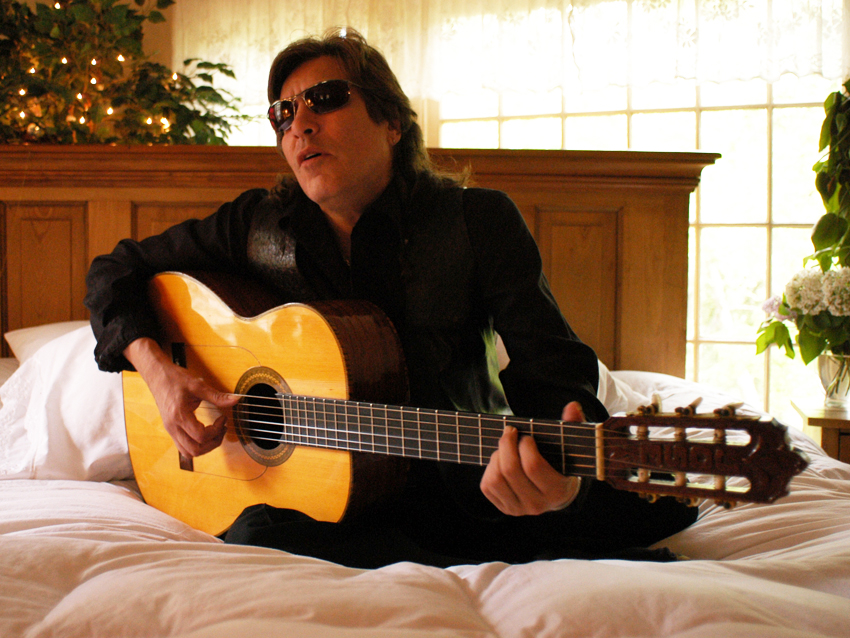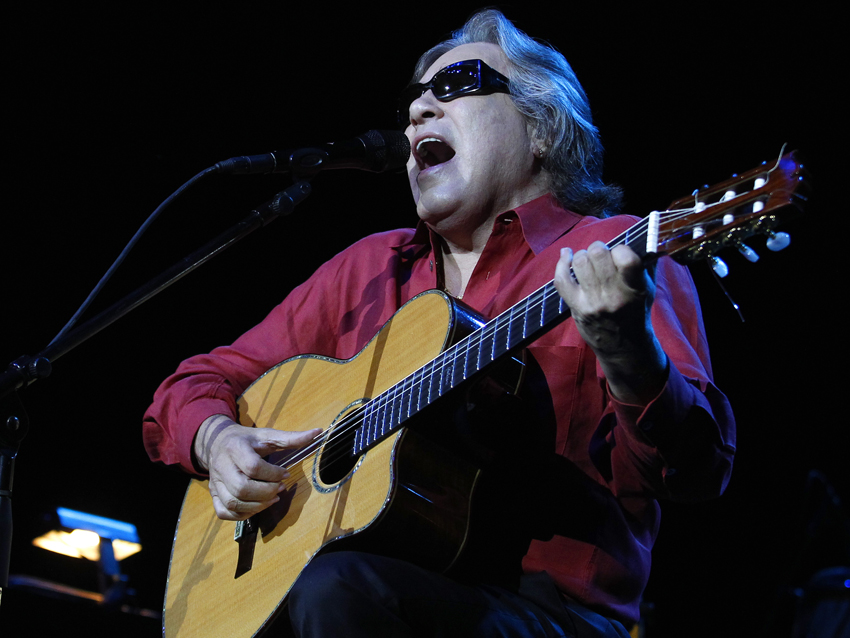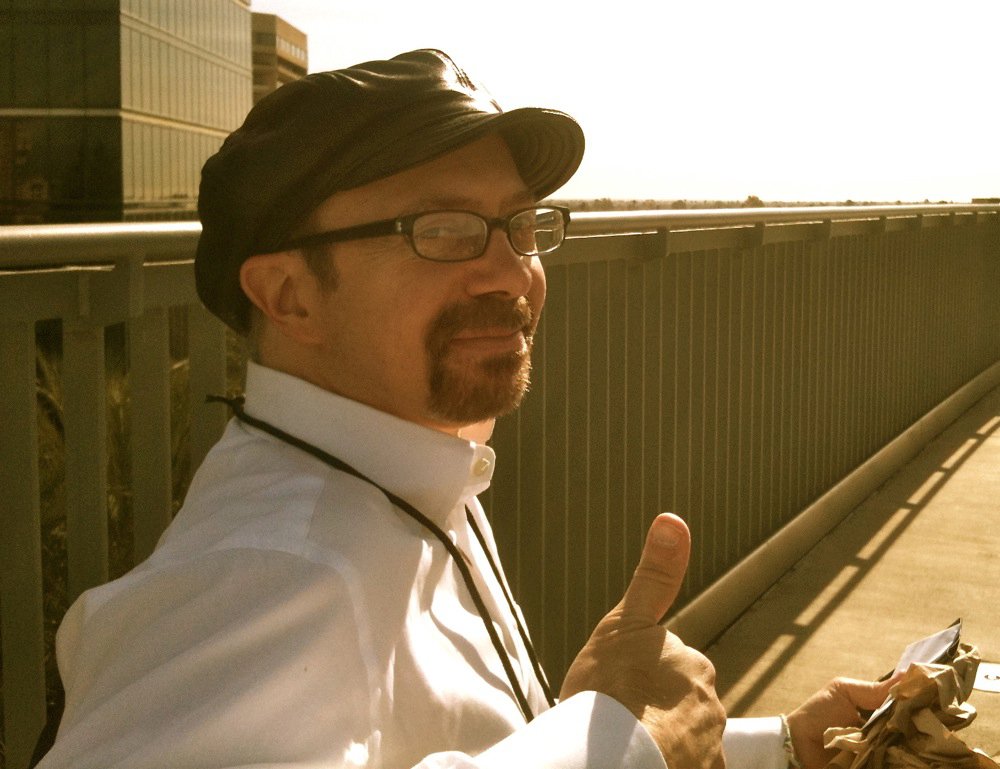
ACOUSTIC WEEK: "I'm not like other guitar players," Jose Feliciano says, stating the kind of truism that is likely to elicit a "no kidding" response from even the most casual music fan. But it's one the venerated fingerstyle legend is happy to expound on.
"In fact, I'm not even like most acoustic players because I use the nylon-string acoustic," he says. "I do play steel-string and the electric guitar, too, because I love rock 'n' roll and guitarists like Jimi Hendrix. But my bread and butter has always been the nylon-string. Very few guitarists play nylon-string. They don't know how to get the sound out of them. That's something I've spent a lot of time on."
Feliciano's sound - a masterful, singular style that mixes Latin-tinged rock, folk, jazz and blues with splashes of classical - has transfixed audiences since the mid-'60s, when the guitarist, blind since birth, burst on the pop charts with his wildly inventive spin on The Doors' Light My Fire. Through the years, Feliciano, 67, has racked up multiple Grammy wins, released dozens of hit albums and even scored a standard with his Christmas single Feliz Navidad, which has been been covered by everyone from Celine Dion to the Voodoo Glow Skulls.
The guitarist figures that his quest to plumb the mysteries of the nylon-string acoustic guitar is a never-ending one. "It still makes sounds and does things that surprise me," Feliciano says. "Any time I think I've learned all the tricks, I'll come up with something, or somebody else will, and a new door opens. It's beautiful."
Of all the guitarists you heard growing up, which acoustic players made a real impression on you?
"I listened to a lot of Spanish guitarists. There was Yomo Toro, who was such a great player. He played the requinto. I started out on the instrument when I was about nine, but I don't think I was a guitarist till I was 14. I played the requinto, too, like Yomo Toro.
"When I was 15, I became an avid fan of Andres Segovia. He brought so much respectability to the guitar. I remember when I tried to apply to the High School Of Music & Art in New York, they wouldn't take me because I played the guitar. I had to play the piano - that's what they said. In my situation, because I was very poor and we lived in a small apartment, I couldn't have a piano. So music and art were out. Julliard was out, too, because you needed money to go there.
Want all the hottest music and gear news, reviews, deals, features and more, direct to your inbox? Sign up here.
"Everything I learned was from records and listening to other people. Segovia was my classical influence, and then I liked Charlie Byrd a lot, too. In the 1960s, when Charlie brought bossa nova to the United States along with Stan Getz, I started listening to acoustic guitar players like Luis Bomfa, Alirio Diaz - they were fantastic.
"But in the popular bag, it was Charlie Byrd who taught me through his records to do certain things on the nylon-string guitar that you're not supposed to do, like bending the note and playing kind of bluesy. All of the guitar purists scoffed at me in my teenage years when I played in the Village. But see, I did those things on the acoustic because I loved rock 'n' roll. I couldn't afford an electric guitar, so I would kind of play my acoustic like an electric. I loved it. [Laughs]
"Ray Charles was another big influence. I know he's not a guitar player, but he was my hero. When I'd listen to Ray Charles, I would do all of his piano lines on the nylon-string acoustic. So I really learned to play from listening to a lot of different types of people and by doing certain things out of necessity, because I couldn't afford these other types of guitars."

A portrait of the artist as a young man: Feliciano in 1969. © Bettmann/CORBIS
Were you a natural on the guitar? Did it come easily to you, or did you struggle?
"I was a natural. Sure, when I was really young, when I started on the ukulele at eight or so, it seemed as if it was taking me forever. Because I didn't have a teacher, I had to teach myself. I didn't know about barre chords, so it wasn't until I learned some things from a classical teacher named Harold Morris that I got barre chords together. Once Harold Morris straightened out my hands and fingering, I took off like a horse at the Kentucky Derby. It all clicked."
Was discovering Segovia as exciting to you as rock 'n' roll? Because you were a teenager at the time…
"It was exciting, sure. I loved Segovia. With rock 'n' roll... like the other kids my age, I discovered it on the radio and from American Bandstand. I picked up on rock 'n' roll between 1955 and '56, and in '56 Elvis came along and made us all rock 'n' roll fans.
"I remember doing Elvis songs at the school assemblies. They'd tell me, 'We're letting you go on, but please, don't excite the kids. Don't play anything too exciting.' Did I listen? Fuck no! [Laughs] I played what I played, you know? The kids would scream - it was great. After my performance, I'd go back to the classroom, and everybody would stand up and clap, which was pretty cool. The teachers had to deal with that. So that was my first taste of success and being accepted by the kids at school as a performer. You never get tired of that, believe me."
What was your first really good acoustic guitar?
"That would be a guitar I borrowed from a lady who became a really good friend; she lives in Connecticut. The guitar was a Goya. In that era, Goya was very, very good. I don't know how they are now, but back they were the guitars of choice for folk and classical players.
"After the Goya, I fell in love with the Candelas guitar. He had a guitar shop at 1066 Sunset Boulevard in Los Angeles back in the '60s. He was the first man who trusted me. I bought a guitar from him, and I told him that I would pay him as soon as I had money. RCA Records signed me, I got some money and immediately paid him. Out of that trust, we developed a tremendous friendship. The only guitars that I would play for a while were Candelas guitars.
"In the interim, I liked Martin steel-string guitars. I have a Martin D-28 that's really great. Also, Guild made a classical guitar that was good for its time. But my preference with Guild was their 12-string models. Now you have different brands - Taylor is very good, too. But I don't think Taylors will ever be as great as a Martin for steel strings."
You started playing the folk clubs in New York in the early '60s, right around the same time as Bob Dylan and Joan Baez. What did you think of what they were doing?
"When I heard Joan Baez… see, she was one of the queens of folk music. In fact, I had a crush on her [laughs]. She had a song that had the line 'But I was nothing to him and he was the world to me' - well, to me, I was nothing to Joan Baez because I wasn't known, but she was the world to me. I admired her. She played acoustic guitar very well.
"When I first heard Bob Dylan, I'll be honest, I didn't like him. But I was shallow of mind and didn't understand the poetry. I just judged him on his singing and his guitar playing. Then when I wised up, and I realized the tremendous things the man was saying, that's when it clicked, and I became a huge fan. I love Bob Dylan. He's a wonderful poet.
"I fell in love with Paul Simon, too. I think he's a brilliant writer and singer, and his guitar playing is fantastic. The things he does with his fingers on the steel string... he's very talented and creative. There's so many people I admire who came from the New York folk scene. Pete Seeger and the Weavers meant a lot to me.
"Folk music got me interested in lots of different instruments - like the mandolin and the banjo. I play what I call 'bullshit banjo,' because I'm not a good banjo picker. But I love it. I used to be in a lot of trios in New York, and I did that for a while. The city was very exciting, and it meant a lot that the people in the Village accepted me. I know it's an old saying from the song, but it's really true: if you can make it in New York, you can make it anywhere." [Laughs]
Although you had some success earlier, most people first heard you in 1968 when your interpretation of The Doors' Light My Fire became a hit.
"That was a great thing for me because it featured the nylon-string acoustic. Nobody had made a rock 'n' roll record with a nylon-string. Never. But it was normal for me; it was just the way that I performed and played."

"I don't try to show that I'm the best or the fastest or anything like that," says Feliciano. © David Bravo
Did any members of The Doors ever tell you what they thought of your version?
"I did hear from Robbie Krieger, who said, 'That was the way the song really should have been done.' I think Ray Manzarek, the keyboardist, liked what I did. I was a Doors fan, so that was just my way of showing The Doors that I liked their music. I never thought my version would be a hit, because the A-side of the single was California Dreamin'. I was trying to show The Mama & The Papas that I liked their music, too."
What kinds of guitars were you playing during this period and into the '70s?
"I was playing the Candelas guitar at that particular time. That's what I used for Light My Fire. Now I play the Laguna guitars, which are made by Kirk Sand in California."
You had your own signature guitar at one point, right?
"I did, but I don't play those too much. Those guitars are made for beginners. I wanted to put guitars into people's hands that were affordable, because if you want to get a good guitar these days, it costs a hell of a lot of money. I will be making a new Jose Feliciano model. I want my friend Kirk Sand to do it. That one would be for people who do want to graduate and pay a few thousand dollars on a guitar."
Using the nylon-string guitar on pop songs - did you feel as if you were pioneering a sound?
"No, not at all. I was just doing what sounded good to me. I did what I did. And if things weren't done or were looked down on… Like the way I do certain bends on the acoustic, that's not done, supposedly. But it took Charlie Byrd to show me that it is done, and in that sense, I copied him and his ideas, and I added my own thing to it.
"I've always had blistering speed with my right hand. People call it 'flamenco,' but it's not. I've heard the phrase 'Jose Feliciano and his flamenco guitar' - that's not what it is. I'm not a flamenco guitarist. I happen to play a nylon-string guitar that flamenco guitarists also use, but I'm not a flamenco guitarist."
The story goes that you got to jam with Hendrix…
"No, actually, that's not true. I don't know how that got started. I did meet him. I met him in England, but we never jammed. He's an electric guitarist - nobody would have heard me! [Laughs] But I loved his music. In my electric guitar set, I do some of his tunes, like Purple Haze. Jimi was really remarkable.
"By the way, if you want to see something cool of me when I was young, look on YouTube for a clip of me playing on the Ted Mack Amateur Hour. I had a group called the Modern Sound Trio. I played an electric guitar, a Gibson hollowbody that I borrowed from the Lighthouse For The Blind in New York.
"Another good clip to check out is me on the Ed Sullivan Show. I was 17, and I played Flight Of The Bumblebee on a nylon-string with a pick, which was kind of taboo, too."
Where do you stand on electronics and acoustics? Do you use any kinds of pickups in your guitars, or do you prefer straight miking?
"I have good pickups on my nylon acoustics that Kirk Sand puts in them. Back when I had my Candelas, I had no pickups; we used to mic the guitars in clubs and stuff. I prefer the guitars with the pickups, because when you mic a guitar, it can be very iffy. You might get some rumble from the guitar or that sound where it goes, 'Woooooo!' [Laughs] That's not a pure sound; it's not good sound. Things are much better nowadays.
"There's quite a few good guitars with their own pickups. If people can't afford the one I play, Takamine is good. And Taylor - they made good acoustics with pickups, as well."

Performing at the Seminole Hard Rock Live Arena in Hollywood, Florida, 2012. © Sayre Berman/Corbis
On your 2006 album Six-String Lady, there's a song called Espana Verde, which is a breathtaking example of unbridled guitar virtuosity. That's pretty rare for you - you're not known for showboating.
"No. No, I don't. I like to be humble, you know? I love all kinds of music, and you know, even though I'm not a flamenco guitarist, I do like flamenco music. I wrote that song when I was in was in Spain, and I was very influenced by the flamenco. Sometimes it happens. But I don't try to show that I'm the best or the fastest or anything like that."
Is there anything you wish you could do on the guitar that you can't? What area of your playing do you want to improve?
"Everything. [Laughs] I hope everything. The day I stop learning and I don't try to make myself better on the guitar, that's the day I hang it up and say, 'Goodbye.' I'm always learning. I'm always grateful to the young kids who play guitar and do new things. I'm not an envious person. If I hear somebody doing something on the guitar that I can't do, I go and learn it. I put it in my arsenal of weapons."
You're a great singer, but what if you weren't? Would you have been happy to simply be a guitarist?
"That's interesting. In my mind, I've always thought of myself as a much better guitarist than singer. I think I've improved as a singer over the years, but my guitar has been a constant. There's a lot of great singers out there but very few great guitarists. I'm glad that God gave me both gifts and that I can do both well, but yeah, I'm a much better guitar player."
You still play hundreds of shows each year. Why do you work so hard?
"I love it. I can't see stopping. Maybe when I get really old and my hands get fucked up from arthritis or something. But it's like when I played at school: When I do concerts now and the audiences go crazy, I'm playing and I'm thinking, Wow, Jose, can you believe that after all these years people still want to hear you? They still love your music? That's a thrill that never gets old. And I never take it for granted."
Joe is a freelance journalist who has, over the past few decades, interviewed hundreds of guitarists for Guitar World, Guitar Player, MusicRadar and Classic Rock. He is also a former editor of Guitar World, contributing writer for Guitar Aficionado and VP of A&R for Island Records. He’s an enthusiastic guitarist, but he’s nowhere near the likes of the people he interviews. Surprisingly, his skills are more suited to the drums. If you need a drummer for your Beatles tribute band, look him up.
